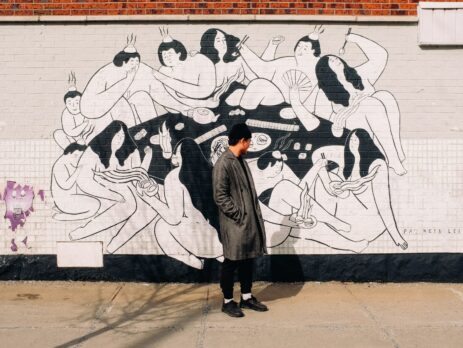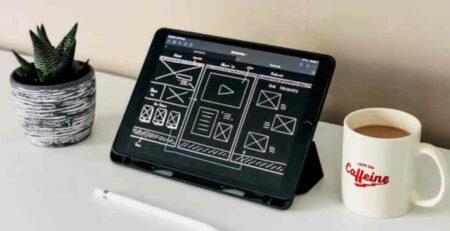Beyond the Canvas: Tips for Recruiting Mural Artists
Murals have the power to transform spaces, convey stories, and create immersive experiences unlike any other form of art. For businesses, communities, or private collectors looking to commission mural art, finding and recruiting the right artist is a crucial step that can determine the success of the project. This guide aims to provide comprehensive insights into the process of recruiting mural artists, ensuring that your artistic vision is brought to life effectively and beautifully.
Understanding the unique nature of mural art is the first step in the recruitment process. Unlike other forms of artwork, murals are site-specific and often engage with the public in dynamic ways. This means that the chosen artist not only needs to have technical painting skills but also a robust understanding of public art dynamics, community engagement, and often, the ability to handle logistical challenges such as scaling, weather conditions, and material selection.
Before beginning your search for a mural artist, it’s important to clearly define the scope and vision of your project. Consider the message or theme you want the mural to convey, the size of the wall or space where the mural will be located, and any community or cultural considerations that might influence the artwork. Having a clear project outline will help in communicating your vision to potential artists and will be crucial in selecting an artist whose style and experience align with your project’s needs.
Recruiting the right mural artist involves a mix of research, networking, and understanding of the art world. Many mural artists can be found through social media platforms, artist portfolios online, or through recommendations from art consultants or galleries. Websites like iCreatives can also be a valuable resource in your search for professional artists.
Once potential artists have been identified, assessing their portfolios and past projects is essential. Look for artists whose past works resonate with the style and theme you envision for your mural. Pay attention to their technical skills, creative expression, and the scale of their previous projects to ensure they can handle the specific demands of your mural.
After narrowing down your list of potential artists, the next step is to initiate contact and gauge their interest and availability. This phase is also about assessing their professionalism and communication skills, which are crucial for a successful collaboration. Prepare to discuss project details, budget, timelines, and any other expectations during initial conversations.
Commissioning a mural is a collaborative process. It is advisable to involve the artist in the planning stages as much as possible. This collaboration can lead to a more tailored and impactful artwork, as the artist will have a better understanding of the space and the context in which their work will exist.
Negotiating contracts and terms of engagement is another critical step. Ensure that agreements on copyright, maintenance, artist’s fees, and other logistical details are clearly laid out to avoid any misunderstandings during and after the project’s completion.
Throughout the project, maintaining open lines of communication with the mural artist is key. Regular check-ins and updates can help keep the project on track and ensure that any challenges are addressed promptly. This ongoing dialogue fosters a positive relationship and ensures that the project aligns with the initial vision and goals.
Finally, promoting the completed mural can benefit both the artist and the commissioner. Sharing the project through media, social platforms, and community events not only celebrates the new artwork but also engages the community and raises awareness about the importance of public art.
By following these steps and considerations, you can successfully recruit a mural artist who will bring your vision to life with creativity and professionalism. The impact of a well-executed mural can be profound, transforming spaces and inspiring viewers for years to come.
Most Asked Questions About Recruiting Mural Artists
- How do I find and select the right mural artist for my project?
- What are the key considerations when negotiating a contract with a mural artist?
- How can I effectively communicate my vision to a mural artist?
- What are the logistical challenges involved in mural creation and how can they be managed?
- How do I handle copyright and intellectual property rights when commissioning a mural?
- What are the best practices for maintaining a mural once it is completed?
- How can promoting a mural benefit the artist and the community?

How do I find and select the right mural artist for my project?
Finding and selecting the right mural artist for your project involves a combination of research, artistic judgment, and logistical considerations. Start by defining the scope and goals of your mural project, including the style, theme, and location. This clarity will help you in searching for artists whose work aligns with your vision.
Utilize online platforms and social media to discover artists. Websites like Instagram and Pinterest, and professional platforms such as iCreatives, are excellent resources for finding talented muralists. Additionally, attending art exhibitions and consulting with art professionals can provide leads and insights.
When reviewing artists’ portfolios, look for diversity in style and subject matter, ensuring they have experience with projects of similar scale and complexity. Pay attention to their artistic expression and technical execution to gauge whether they can meet the demands of your project.
It’s also important to read reviews or seek testimonials from previous clients to understand the artist’s professionalism and ability to stick to deadlines and budgets. Engaging in preliminary discussions with artists can also give you a sense of their enthusiasm and commitment to potential projects.
Once you have a shortlist, arrange meetings to discuss your project in detail. This is a crucial step to see how well they understand your vision and to assess their creative input. During these meetings, observe their communication skills and their ability to offer creative solutions.
Ask for sketches or concepts to see how they plan to translate your ideas into their artistic style. This can also be a stage to negotiate preliminary costs and timelines, which are crucial for project planning.
Consider the artist’s logistical capabilities to manage large-scale projects, including their team, equipment, and experience with necessary materials and techniques. This is particularly important for outdoor murals, which require durability against weather conditions.
Once you decide on an artist, it’s advisable to draft a detailed contract that outlines all project specifics, including deadlines, payment schedules, copyright terms, and expectations regarding the final deliverable. This legal agreement will protect both parties and clarify the project scope and responsibilities.
Finally, ensure that there is a mutual understanding and agreement on creative freedom within the boundaries of your project’s objectives. A successful mural project balances the artist’s creative vision with the client’s needs, resulting in a work that resonates with both the commissioner and the community.
By following these steps, you can select a mural artist who not only aligns with your artistic vision but also possesses the professionalism to execute the project smoothly and effectively.
What are the key considerations when negotiating a contract with a mural artist?
Negotiating a contract with a mural artist is a critical step in ensuring that both parties are clear about the expectations and responsibilities related to the project. The contract should comprehensively cover all aspects of the project, from artistic requirements to financial arrangements and legal rights.
The first consideration is the scope of the project. Clearly define what the artist is expected to deliver, including the size of the mural, the location, the materials to be used, and the completion date. This clarity helps prevent misunderstandings during the project.
Financial terms are another crucial aspect. The contract should specify the total cost, payment schedule, and any provisions for unexpected expenses. It’s common to pay a portion of the fee upfront, with subsequent payments tied to project milestones.
Copyright and ownership rights are particularly important in artistic works. Specify who holds the copyright to the mural once it is completed, and whether the artist retains any rights to reproduce the work in other forms. This section should also address whether the artist can include the mural in their portfolio.
Consider including a clause about maintenance and durability, specifying who is responsible for the upkeep of the mural and how long the artist guarantees the work against natural wear and tear.
Liability and insurance should also be addressed, particularly who is responsible for any damages during the creation of the mural, whether to the property or the artwork itself.
Termination clauses are essential in case either party needs to withdraw from the contract. These should outline acceptable reasons for termination and the process for concluding the agreement.
Dispute resolution methods should be included to manage any disagreements that arise in a structured and fair manner. This might include mediation or arbitration processes.
It’s also wise to discuss and include the artist’s involvement in any promotional activities related to the mural, such as public unveilings, media interviews, or community events.
Ensure that all legal jargon in the contract is clear and understood by both parties. It may be beneficial to have legal counsel review the document before it is signed to ensure that all terms are legally binding and protect the interests of both parties.
By carefully considering these elements when drafting a contract, you can establish a professional and transparent relationship with the mural artist, which contributes to the smooth execution and success of the project.
How can I effectively communicate my vision to a mural artist?
Effective communication with a mural artist is key to ensuring that the final artwork aligns with your vision. It starts with a clear and detailed briefing where you share your ideas, objectives, and any specific requirements you have for the mural.
Use visual aids to convey your ideas. Mood boards, color palettes, photographs, and even other artworks can help illustrate the style, tone, and feel you are aiming for. These tools can serve as a visual language that bridges the gap between your concept and the artist’s interpretation.
Be specific about the elements that are important to you but also leave room for the artist’s creative input. Mural artists can bring a new dimension to the project with their expertise and experience, which can enhance the original concept.
Discuss the significance of the location where the mural will be placed. Understanding the context in which the mural will exist can influence the artist’s design choices and help integrate the artwork into its surroundings more effectively.
Communication should be ongoing throughout the project. Set up regular check-ins to review progress, discuss any changes, and make adjustments as needed. This keeps the project on track and builds a collaborative relationship between you and the artist.
Be open to feedback from the artist. They might have suggestions based on their artistic experience that could improve the impact or feasibility of the mural. This two-way communication ensures the project benefits from both your vision and the artist’s expertise.
Use clear and concise language in your communications. Avoid jargon unless it’s commonly understood in the art world, and ensure that your expectations and requirements are understood.
If there are multiple stakeholders involved in the project, ensure that all communications are centralized or that all parties are kept in the loop to avoid conflicting information or expectations.
Consider using a project management tool or platform where updates, files, and feedback can be shared easily between all parties. This can help maintain an organized and documented flow of communication.
Finally, show appreciation for the artist’s work and input. A positive working relationship can lead to better outcomes and might pave the way for future collaborations.

What are the logistical challenges involved in mural creation and how can they be managed?
Mural creation involves several logistical challenges, from the initial planning stages to the physical execution of the artwork. These challenges can include securing the right location, ensuring the availability of materials, dealing with weather conditions, and coordinating with local authorities or property owners.
Securing a location for a mural often requires permissions and agreements with property owners or local governments. It’s important to obtain all necessary permits and ensure that the wall or surface is suitable for painting. This might involve structural assessments and preparation work to make the surface ready for painting.
The availability and delivery of materials can also pose a challenge, especially for large-scale murals. Planning ahead and ordering supplies well in advance can mitigate the risk of delays. It’s also wise to consider local suppliers for ease of access and potential cost savings.
Weather conditions can significantly impact the progress of outdoor mural projects. Scheduling the project during weather-appropriate times of the year and having contingency plans for bad weather can help keep the project on schedule.
Working in public spaces often involves interaction with the community and potential disruptions to the local area. Engaging with the community early in the project can help manage expectations and foster a positive atmosphere around the mural’s creation.
Health and safety are paramount, particularly when working at height or with potentially hazardous materials. Ensuring that all safety protocols are followed and that insurance is in place protects both the artist and the public.
Logistical planning should also consider the impact of the mural on traffic and local businesses. Coordinating with local authorities to manage any disruptions can help maintain good relations and minimize negative impacts.
For murals that involve complex designs or multiple artists, project management becomes crucial. Using tools to track progress, budgets, and schedules can keep the project organized and transparent.
Documentation of the process for legal and promotional purposes is also important. Taking regular photos and keeping records of all agreements and permits can be useful for both current and future reference.
Finally, post-completion logistics such as maintenance and the unveiling event need to be planned. This includes arranging regular upkeep and organizing events to celebrate the completion of the mural, which can enhance community engagement and appreciation.
How do I handle copyright and intellectual property rights when commissioning a mural?
Handling copyright and intellectual property rights is a critical aspect of commissioning a mural. It’s important to address these issues upfront to avoid any legal complications or misunderstandings after the project’s completion.
The first step is to clearly define who will own the copyright to the mural once it is completed. Typically, the copyright might remain with the artist, but the commissioner will have rights to display the artwork and use it for promotional purposes. This should be explicitly stated in the contract.
Discuss and agree on the use of the mural’s image. Can the commissioner reproduce it for marketing or commercial purposes? Can the artist use it in their portfolio or reproduce it in other forms? These rights should be clearly negotiated and stipulated in the contract.
Consider the moral rights of the artist, which include the right to be credited as the author of the work and the right to object to any modification of the work that could harm the artist’s reputation. These rights are recognized in many jurisdictions and should be respected in the agreement.
If the mural is in a public space, consider the implications of public access. While the public can view and enjoy the mural, copyright laws generally prevent them from reproducing images of the mural for commercial purposes without permission.
It’s advisable to register the copyright if the mural is a significant work. This provides legal evidence of copyright ownership, which can be important in protecting the rights of the owner and the artist.
Include a clause in the contract that addresses the potential destruction or alteration of the mural. Specify what rights the artist has if the mural is to be removed or altered in the future.
Be aware of copyright laws that pertain to works created by employees or works made for hire, as these can affect ownership rights. If the artist is hired as an employee, the copyright may automatically belong to the employer, not the artist.
For international projects, consider the copyright laws of both the country where the mural is created and the artist’s home country. Copyright laws can vary significantly between countries, and international treaties may influence the rights of both parties.
Finally, consider obtaining legal advice to ensure that all aspects of copyright and intellectual property rights are covered adequately in the contract. This can prevent future legal issues and ensure that both the artist’s and commissioner’s rights are protected.
What are the best practices for maintaining a mural once it is completed?
Maintaining a mural once it is completed is essential to ensure its longevity and continued aesthetic appeal. Best practices for mural maintenance involve regular inspections, proper cleaning techniques, and protective measures against environmental factors.
Conduct regular inspections of the mural to check for any signs of damage or wear, such as fading, peeling, or graffiti. Early detection of these issues can prevent more extensive damage and simplify repairs.
Clean the mural periodically to remove dirt, dust, and other deposits. Use gentle cleaning methods that do not damage the paint or the surface. Avoid harsh chemicals and high-pressure washing, which can erode the artwork.
Apply a UV-resistant and anti-graffiti coating to protect the mural from sun damage and vandalism. These coatings can help preserve the vibrancy of the colors and make it easier to clean the mural without harming the underlying artwork.
If the mural is exposed to harsh weather conditions, consider additional protective measures such as waterproofing or installing a barrier to shield it from wind, rain, or snow.
Engage local communities in the maintenance of the mural. Community involvement can help deter vandalism and encourage local residents to take pride in the upkeep of the artwork.
Establish a maintenance fund or plan that allocates resources for the ongoing care of the mural. This can include funds for cleaning, repairs, and periodic restoration efforts.
Document the original condition of the mural and any maintenance activities. This record can be useful for future restoration efforts and for understanding the long-term behavior of the materials used.
Train maintenance staff on the specific needs of the mural, ensuring they understand the best practices for its care and the importance of preserving its artistic integrity.
If significant restoration is needed, consult with professional conservators
who specialize in mural restoration. These professionals can assess the damage and perform repairs that maintain the original intent and style of the artwork.
Finally, consider the use of signage or educational materials near the mural to inform the public about the artwork, its significance, and how they can contribute to its preservation. This can enhance community engagement and foster a collective effort to maintain the mural.
How can promoting a mural benefit the artist and the community?
Promoting a mural can significantly benefit both the artist and the community by enhancing visibility, fostering cultural pride, and potentially boosting economic benefits through increased tourism and local business traffic.
For the artist, promotion serves as a platform to showcase their skills and creativity to a broader audience. This exposure can lead to more professional opportunities, including commissions, collaborations, and invitations to participate in exhibitions or speaking engagements.
Community-wise, a well-promoted mural can become a landmark that fosters local pride and identity. It can turn an ordinary space into a cultural hotspot, encouraging community interaction and making the area more attractive to visitors.
Promotion can be achieved through various channels. Social media platforms offer a powerful tool for sharing images and stories about the mural, reaching both local residents and a global audience. Local media can also play a crucial role in highlighting the mural’s creation process and its cultural significance.
Organizing events such as unveilings, guided tours, or community workshops centered around the mural can engage the public and create a sense of ownership and pride in the artwork. These events can also provide networking opportunities for the artist and foster collaborations within the community.
Incorporating QR codes or interactive elements that link to websites or multimedia content can enhance the viewer’s experience and provide more in-depth information about the mural and the artist. This digital interaction can extend the reach of the mural beyond the local community.
Collaborations with local businesses or tourism boards can amplify the impact of the mural. Such partnerships can include mural maps or art walks that include local shops and eateries, benefiting the entire community economically.
Recognition and awards can also elevate the status of both the mural and the artist. Encouraging nominations for art and community awards can bring further credibility and attention to the artwork.
Finally, maintaining a good relationship with the artist even after the project can lead to ongoing promotional efforts and updates, keeping the community engaged and the mural relevant.
Through thoughtful promotion, a mural can transcend its role as mere decoration to become a vital part of the cultural and economic fabric of the community, benefiting both the artist and the area it beautifies.
Conclusion
In conclusion, recruiting and working with a mural artist involves a series of strategic steps that, when executed thoughtfully, can lead to the creation of impactful and enduring public art. From the initial artist selection and contract negotiation to the effective communication of your vision and the logistical management of the mural’s creation, each phase is crucial.
Understanding and respecting copyright and intellectual property rights form the foundation of a successful collaboration, ensuring that both the artist’s creative contributions and the commissioner’s interests are protected.
Maintaining the mural post-completion is essential for preserving its aesthetic and cultural value, while promoting the mural can amplify its benefits, enhancing the artist’s career and enriching the community.
Ultimately, the process of creating a mural is a collaborative endeavor that requires clear communication, mutual respect, and a shared commitment to bringing a creative vision to life. By following the guidelines outlined in this guide, commissioners can navigate the complexities of mural projects with confidence, ensuring that these vibrant artworks continue to inspire and engage communities for years to come.For further insights into managing creative projects and fostering effective collaborations, consider exploring resources such as Using a Staffing Agency and Tips for Managing a Remote Work Force.
In today’s competitive market, finding the right creative and marketing expert can be a challenge. But with icreatives, you’re in experienced hands. With 37 years in staffing and a track record of matching more than 10,000 employees to over 1,000 companies worldwide, we know how to connect you with the best. Plus, you only pay if you hire—there’s no risk, only results.
Ready to find your perfect creative or marketing expert? HIRE WITH ICREATIVES today!












